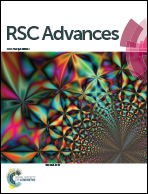Bioactive poly(methyl methacrylate) for bone fixation
Abstract
Poly(methyl methacrylate) (PMMA) is broadly used for bone fixation. One of the major concerns of using this polymer is the lack of post-implantation integration with the host tissue. We have produced a novel hybrid ceramic–thermoplastic composite manufactured by a sol–gel method via covalent bonding between bioactive glass and PMMA to address this shortcoming. The uniform distribution of bioactive glass promoted the bioactivity of PMMA and substantially improved the biological properties. In this paper, we describe a refinement of the synthesis process of a previously manufactured PMMA–bioactive glass hybrid resulting in significantly more rapid fabrication. Key innovations were the replacement of tetrahydrofuran with ethanol as a more biologically benign reaction solvent, and the addition of sodium bicarbonate as a non-toxic catalyst. Our results showed that the gelation time was decreased 100-fold by increasing the reaction temperature from 25 °C to 70 °C, which also increased the rate of hardening 7-fold. The resulting hybrid monoliths displayed a more condensed structure with an 80% increase in network connectivity and 6-fold more resistance to degradation. These favorable biophysical properties of the new class of hybrids also enhanced the osteoblast adhesion and proliferation compared with the previously developed hybrids. This bioactive glass–PMMA hybrid has great potential to be used as a bone filler.


 Please wait while we load your content...
Please wait while we load your content...